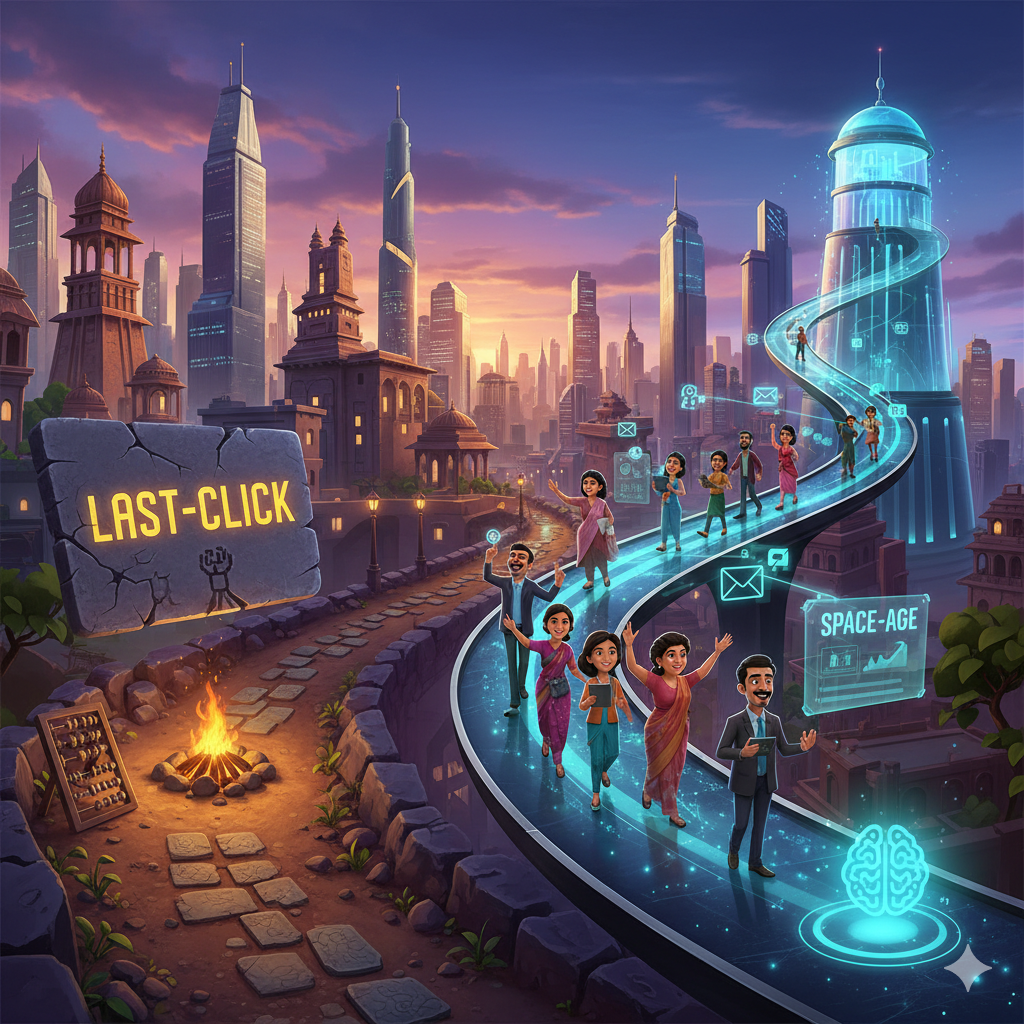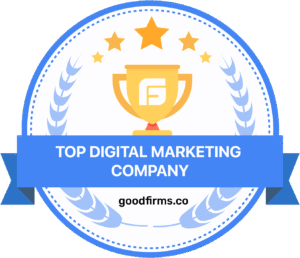The digital marketing landscape has reached a critical inflection point. While brands across industries pour millions into campaigns that generate impressive vanity metrics, the underlying reality is different. It reveals a troubling disconnect between marketing spend and meaningful business outcomes.
This disconnect is inefficient and it is fundamentally reshaping competitive dynamics. The brands that emerge as market leaders in 2025 will be those who master the intersection of data-driven precision and strategic storytelling. These brands will be transforming every marketing rupee into a measurable asset that compounds over time.
You ought to consider this: traditional marketing approaches operate on assumptions and approximations. Performance marketing, when executed with strategic sophistication, operates on mathematical certainties. This characterization creates predictable and scalable growth engines.
Stop Playing Small: The Performance Marketing Revolution Is Here
Performance marketing isn’t at all like advertising in the 80’s. This isn’t limited to pretty creatives or viral moments. It’s about cold, hard math that turns marketing spend into predictable revenue growth. And if you’re not approaching it this way, you’re already losing.
The game has fundamentally changed. Traditional marketing feels like shooting arrows in the dark while wearing a blindfold. Performance marketing on the other works with laser-guided precision that hits the bullseye every single time.
Here’s the thing most marketers miss: Performance marketing operates on three non-negotiable principles that separate the winners from the wannabes.
- Every action must be measurable
- every decision must be data-driven
- every campaign must be continuously optimized. No exceptions.
Master Attribution or Stay Mediocre
Before we dive into the Online advertising strategies that’ll transform your ROI, let’s talk about attribution. The reason simply is that if you’re still using last-click attribution models, you’re operating with Stone Age technology in a space-age world.
Your customers don’t follow neat and linear paths to purchase. They see your Instagram ad and then they go and check out your website. They will read your blog, get retargeted on Facebook, receive three emails, and finally convert after seeing your Google ad. Last-click attribution gives all the credit to that final Google ad, completely ignoring the five touchpoints that actually drove the sale.
Smart marketers implement multi-touch attribution that tracks every interaction across every channel. This isn’t nice-to-have data, it’s the foundation of intelligent budget allocation that can double or triple your marketing efficiency.

Channel Mastery: Where Real Performance Happens
It is highly important that you know which channel really drives performance.
Google Ads
People are highly mistaken that Google Ads is just about bidding on keywords. It may have been that way earlier but not anymore. The winning teams in 2025 understand Google’s machine learning algorithms. They are incredibly sophisticated, but only if you feed them the right data.
Start with Quality Score optimization. This single metric can slash your cost-per-click by 50% while boosting your ad positions. Create tightly themed ad groups where every keyword, ad copy, and landing page speaks the same language. Use every ad extension available, they’re free real estate that increases your click-through rates and gives you more space to sell.
Here’s the insider move: implement automated bidding strategies that optimize for your actual business goals, not vanity metrics. If you care about conversions, these are some one of the best conversion rate optimization tips is to use Target CPA or Target ROAS bidding. If you’re focused on volume, maximize conversions. Let Google’s AI do the heavy lifting while you focus on strategic optimization.

Social Media Advertising
Social media performance marketing like Facebook and Instagram ads work differently than search marketing. This is actually something that makes brands that understand this difference print money. These platforms reward engagement content that gets people commenting, sharing, and interacting drives down your costs and increases your reach.
It is important that you create ads that spark conversations. We suggest you ask questions, share controversial (but relevant) opinions, and tell stories that resonate with your audience’s experiences. The algorithm notices when people engage with your content and rewards you with cheaper reach and better targeting.
One more thing you need to understand is that lookalike audiences are your secret weapon. You should be uploading your customer list, not just purchasers, but your highest-value, most profitable customers, and let Facebook find similar users. Combine this with interest targeting to create powerful audience intersections that deliver qualified traffic at scale.

Programmatic Advertising
Programmatic lets you reach your ideal customers across the entire internet through real-time bidding. But success requires sophistication, you’re competing with algorithms, not just other marketers.
As you implement dynamic creative optimization it automatically tests thousands of combinations of headlines, images, and calls-to-action. You should also use contextual targeting alongside behavioral targeting. This makes sure that your ads appear in premium and brand-safe environments that reinforce your positioning.
Conversion Optimization is Where Money Is Made or Lost
Your landing page determines whether your performance marketing succeeds or fails. Period. Every element, from your headline to your button color, impacts conversion rates. It is bound to directly affect your marketing ROI.
We suggest you run systematic A/B tests with clear hypotheses. Don’t just test random elements, analyze the following
- user behavior data
- heat maps
- customer feedback
This analysis aids to identify optimization opportunities. Test headlines that address specific pain points, value propositions that highlight unique benefits, form lengths that reduce friction, and social proof placement that builds trust. It is very important that you determine data-driven advertising strategies.
Here’s what most marketers get wrong: they test too many variables at once. Test one element at a time. This is very important to achieve statistical significance, then move to the next test. This methodical approach compounds improvements that can double or triple your conversion rates.
Remarketing: The Relationship Game-Changer
Remarketing isn’t about stalking previous visitors with generic ads. It’s about creating personalized customer journey experiences that guide prospects toward conversion based on their specific behaviors and interests.
Segment your remarketing audiences strategically. For example, product page viewers who didn’t purchase, cart abandoners, past customers ready for repeat purchases, and high-value prospects who engaged with premium content. Create customized messaging for each segment that addresses their specific concerns and motivations.
Dynamic remarketing takes this further by showing visitors the exact products they viewed, creating personalized experiences that feel almost magical. This isn’t advanced technology, it’s standard performance marketing practice in 2025.

Customer Lifetime Value: The Real Performance Metric
Stop optimizing for first-purchase value. The brands dominating their industries focus on maximizing customer lifetime value through strategic retention, upselling, and referral programs.
It is very important that you calculate your true customer lifetime value and adjust your acquisition spending accordingly. If your average customer generates ₹15,000 in profit over three years, you can afford much higher acquisition costs than competitors focused only on immediate transaction value.
This long-term perspective transforms your competitive landscape. While competitors fight over low-cost traffic, you can profitably acquire higher-quality customers at premium prices.
Technology Integration: Your Competitive Advantage
Marketing automation platforms enable sophisticated campaign management that would be impossible manually. Create behavioral triggers that automatically send personalized messages based on specific user actions, abandoned cart emails, post-purchase upselling sequences, re-engagement campaigns for inactive subscribers.
Implement lead scoring systems that identify your highest-quality prospects and automatically route them to your sales team. Use progressive profiling to gradually collect customer information without creating conversion friction.
Connect every tool in your marketing stack through comprehensive analytics platforms that provide unified reporting and cross-channel attribution. Create custom dashboards that display metrics that actually matter for your business objectives, customer acquisition cost, lifetime value, return on ad spend, and contribution margin.

Strategic Budget Allocation: The 70-20-10 Framework
Don’t distribute the budget equally across channels, that’s amateur hour. Use the 70-20-10 framework: 70% on proven, high-performing channels, 20% on scaling existing successful campaigns, and 10% on experimental new opportunities.
Start new campaigns with small budget allocations. Once you identify winning combinations, gradually increase spending while monitoring key performance indicators for efficiency degradation. This systematic approach to testing and scaling minimizes risk while maximizing growth opportunities.
Measuring What Actually Matters
Forget vanity metrics. Focus on numbers that directly correlate with business growth: customer acquisition cost, lifetime value, return on ad spend, and contribution margin. These metrics tell the real story of your performance marketing success.
Create monthly performance reviews that analyze trends, identify optimization opportunities, and inform future Customer acquisition strategies decisions. Performance marketing is iterative, success comes from continuous improvement, not one-time optimizations.
The Future Belongs to Adaptive Marketers
Artificial intelligence and machine learning continue reshaping digital marketing at unprecedented speed. The marketers who’ll dominate the next decade are those who embrace technological advancement while maintaining laser focus on fundamental business objectives.
Stay ahead of industry trends, continuously educate yourself on emerging platforms and strategies, and maintain an experimental mindset that embraces calculated risk-taking. The performance marketing landscape evolves rapidly, your strategies must evolve faster.
Performance marketing mastery isn’t achieved overnight, but with systematic implementation of these strategies, disciplined measurement practices, and relentless optimization focus, every rupee becomes a revenue-generating asset that compounds over time.
Remember this: in performance marketing, everything is measurable, everything is testable, and everything can be optimized. Your job is turning data into insights, insights into strategies, and strategies into predictable, scalable growth that leaves your competition wondering what just happened.
The question isn’t whether you can afford to implement these strategies. The question is whether you can afford not to.
FAQs
Q1. What is performance marketing and how is it different from traditional marketing?
Performance marketing is a data-driven approach where brands pay only for measurable actions like clicks, leads, or sales—unlike traditional marketing, which often focuses on broad reach and brand awareness. It’s about turning every rupee into trackable growth through precise targeting, continuous optimization, and ROI-driven decision-making.
Q2. What are the most effective performance marketing channels in 2025?
The top-performing channels include Google Ads (with AI-driven bidding strategies), social media platforms like Instagram and Facebook (leveraging engagement-driven ads and lookalike audiences), and programmatic advertising (using real-time bidding with dynamic creatives). The winning strategy lies in combining these channels with multi-touch attribution to maximize efficiency.
Q3. How can businesses improve conversion rates in performance marketing?
Businesses can optimize conversions by:
- Running systematic A/B tests with data-backed hypotheses.
- Using heatmaps and behavioral analytics to identify friction points.
- Personalizing landing pages with strong value propositions and social proof.
- Implementing remarketing campaigns tailored to customer behavior.
This structured approach can double or even triple conversion rates over time.
Q4. Why is customer lifetime value (CLV) important in performance marketing?
CLV helps brands focus on long-term profitability instead of just first-purchase ROI. If a customer is worth ₹15,000 over three years, you can afford higher acquisition costs upfront. This enables sustainable scaling, competitive advantage, and stronger retention strategies like upselling, cross-selling, and referral programs.
Q5. What metrics should brands track to measure performance marketing success?
Forget vanity metrics like impressions and likes. Instead, track:
- Customer Acquisition Cost (CAC)
- Customer Lifetime Value (CLV)
- Return on Ad Spend (ROAS)
- Contribution Margin
These metrics directly link marketing performance to actual business growth.




 +1-4159652566
+1-4159652566
 +91-8418866099
+91-8418866099
